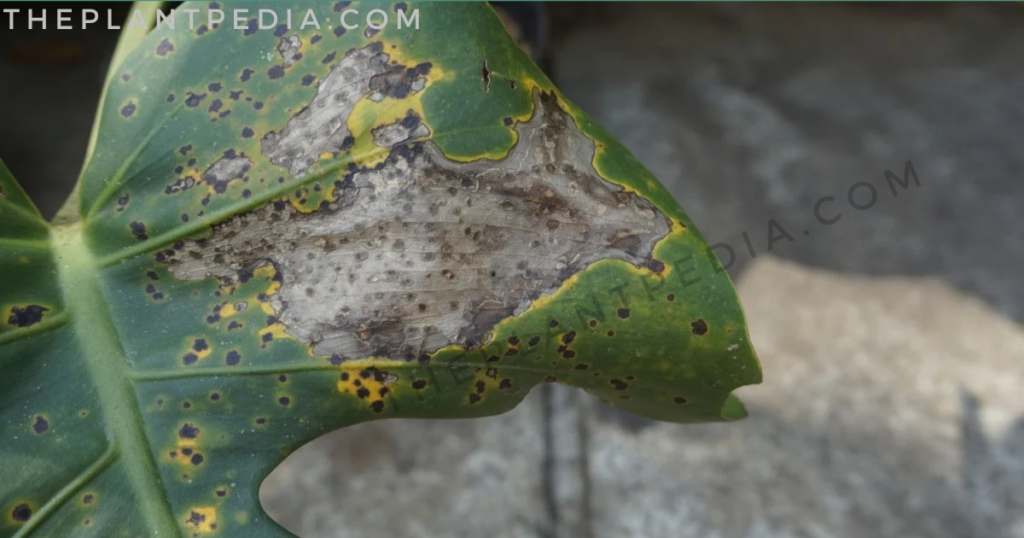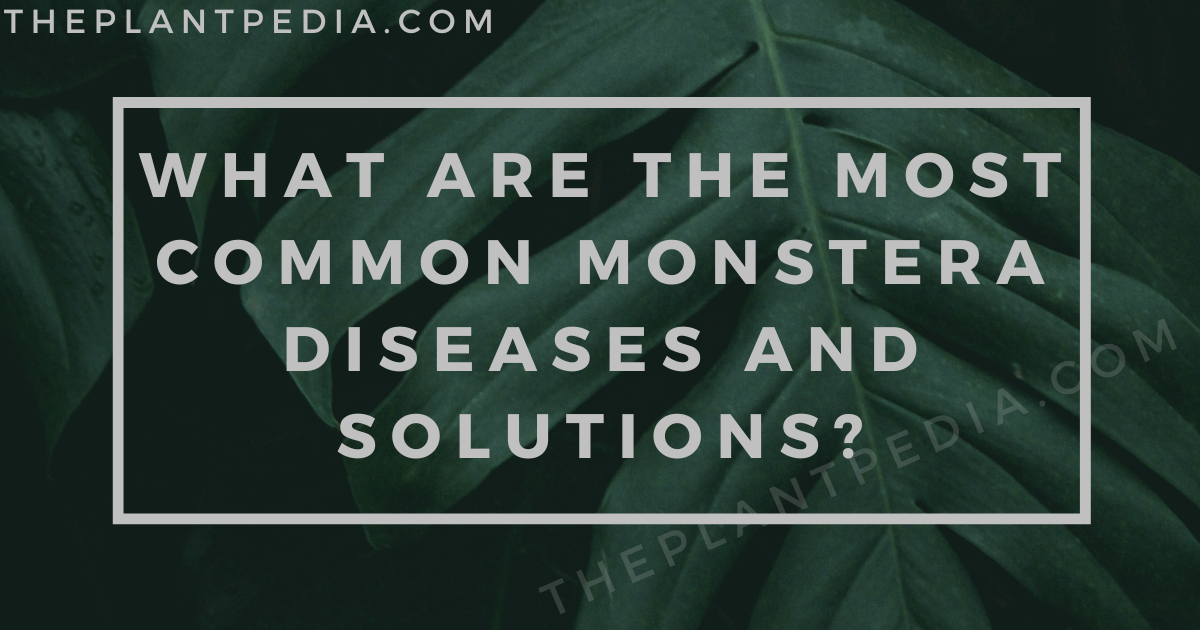Monstera plants, with their unique perforated leaves and tropical allure, are popular houseplants known for their ability to thrive in various environments. However, like all plants, they are susceptible to certain diseases and conditions that can compromise their health. Understanding the most common Monstera diseases and how to effectively address them is essential to maintaining a thriving plant. In this article, we will explore the various Monstera plant diseases, their symptoms, causes, and practical solutions to keep your Monstera healthy and vibrant.
1. Root Rot: The Silent Killer
What Is Root Rot?
Root rot is one of the most common and devastating diseases for Monstera plants. It occurs when the roots of the plant are consistently exposed to waterlogged soil, which creates a perfect environment for harmful fungi and bacteria to thrive. Root rot typically affects the roots of the plant, making them mushy, discoloured, and unable to take up nutrients from the soil.
Symptoms of Root Rot
The most obvious symptoms of root rot in Monstera plants include:
- Yellowing or wilting leaves
- Brown, soft spots on the leaves
- A foul, unpleasant smell emanating from the soil or roots
- Brown or black roots that appear mushy or slimy
- Stunted growth or overall plant decline
Causes of Root Rot
Root rot occurs primarily due to overwatering and poor drainage. If the Monstera’s roots are sitting in water for extended periods, they become oxygen-starved and prone to fungal infections. Using pots without drainage holes or excessive watering in low-light conditions can also contribute to this issue.
Solution for Root Rot
To treat root rot in Monstera plants:
- Remove the Plant from the Pot: Gently take your Monstera out of its pot and inspect the roots.
- Prune the Affected Roots: Use sterilised scissors or pruning shears to cut off any blackened, mushy roots.
- Treat the Plant: Soak the healthy roots in a fungicide solution or dilute hydrogen peroxide (1 part hydrogen peroxide to 3 parts water) to prevent further infection.
- Repot the Monstera: After cleaning and treating the roots, repot the plant in fresh, well-draining soil, ensuring the pot has proper drainage holes. Allow the soil to dry out between waterings to avoid overwatering.
2. Powdery Mildew: White Fungal Growth
What Is Powdery Mildew?
Powdery mildew is a fungal disease that commonly affects Monstera plants, particularly in humid or poorly ventilated environments. This fungal infection appears as white, powdery patches on the leaves and stems, affecting the plant’s overall health.
Symptoms of Powdery Mildew
The signs of powdery mildew include:
- White, powdery spots on the upper side of the leaves
- Yellowing or curling of the leaves around the infected areas
- A decline in leaf vitality, resulting in an overall unhealthy appearance
- Stunted growth if the mildew spreads to the stem
Causes of Powdery Mildew
Powdery mildew thrives in warm, humid environments with poor air circulation. When Monstera plants are watered improperly, or there’s excessive humidity without adequate ventilation, powdery mildew can develop. Overhead watering can also contribute to the spread of spores.
Solution for Powdery Mildew
To treat and prevent powdery mildew on your Monstera plant:
- Remove Infected Leaves: Trim off the infected leaves and dispose of them carefully to prevent the spores from spreading.
- Increase Air Circulation: Ensure the plant is placed in a well-ventilated area to reduce humidity and prevent further fungal growth.
- Fungicide Treatment: Use a natural fungicide, such as neem oil or a mixture of water and baking soda (1 teaspoon baking soda in 1 litre of water), and spray it on the affected areas.
- Water Properly: Water the plant at the base to avoid getting the leaves wet. Avoid wetting the leaves during watering, and never water from above.
3. Leaf Spot Disease: Brown or Black Patches

What Is Leaf Spot Disease?
Leaf spot disease is a common Monstera issue caused by various fungi, bacteria, or environmental stressors. This disease manifests as brown, black, or yellow spots on the plant’s leaves, often accompanied by a yellow halo around the affected area.
Symptoms of Leaf Spot Disease
Common signs of leaf spot disease include:
- Round or irregularly shaped brown or black spots on the leaves
- Yellow halos surrounding the spots
- Leaves that appear water-soaked or have uneven discoloration
- Premature leaf drop in severe cases
Causes of Leaf Spot Disease
Leaf spot disease is typically caused by fungal or bacterial infections that thrive in humid, wet environments. Overwatering, poor drainage, or using contaminated tools can all contribute to this condition. Additionally, physical damage to the plant’s leaves can provide an entry point for pathogens.
Solution for Leaf Spot Disease
To treat leaf spot disease in Monstera plants:
- Remove Infected Leaves: Prune the affected leaves to prevent the spread of the infection.
- Disinfect Tools: Always disinfect your pruning tools with rubbing alcohol before and after use to avoid transferring pathogens.
- Improve Drainage: Ensure your Monstera plant is in well-draining soil and a pot with drainage holes to prevent waterlogging.
- Apply Fungicide: Use a fungicide suitable for indoor plants to prevent further fungal growth. Neem oil can also help in controlling both fungal and bacterial infections.
4. Monstera Leaf Curling: Caused by Various Stressors
What Is Leaf Curling?
Leaf curling is a common problem that can affect Monstera plants. It manifests as curled, twisted, or distorted leaves, often caused by environmental stressors such as pest infestations, improper watering, or extreme temperature fluctuations.
Symptoms of Leaf Curling
The primary symptom of leaf curling is:
- Curled, deformed, or twisted leaves
- Yellowing or browning of the leaf edges
- Overall plant stress, such as stunted growth
Causes of Leaf Curling
Leaf curling can result from several factors, including:
- Underwatering or Overwatering: Both can lead to dehydration or root damage, causing the leaves to curl.
- Low Humidity: Monstera plants thrive in humid environments, and a lack of moisture in the air can cause leaf curling.
- Pest Infestation: Pests like aphids, spider mites, or mealybugs can stress the plant, leading to curled leaves.
- Temperature Stress: Exposure to cold drafts or sudden temperature changes can also cause the leaves to curl.
Solution for Leaf Curling
To treat leaf curling in Monstera plants:
- Water Properly: Ensure your plant is getting the right amount of water, neither too much nor too little.
- Increase Humidity: Place a humidifier near your Monstera or mist the leaves regularly to maintain a higher level of moisture in the air.
- Inspect for Pests: Check the leaves for any signs of pests and treat them with insecticidal soap or neem oil.
- Maintain Stable Temperatures: Keep your Monstera in a consistent, warm temperature, avoiding cold drafts or direct exposure to air conditioners or heaters.
5. Aphids and Mealybugs: Tiny, Yet Destructive Pests
What Are Aphids and Mealybugs?
Aphids and mealybugs are common pests that can infest Monstera plants, particularly in warm, humid conditions. These pests suck the sap from the leaves and stems, leading to stunted growth, yellowing leaves, and a weakened plant.
Symptoms of Aphid and Mealybug Infestation
Signs of an aphid or mealybug infestation include:
- Small, soft-bodied insects clustered on the undersides of leaves or stems
- Sticky residue (honeydew) left on the leaves, attracting mould
- Yellowing or curling of leaves
- A decrease in overall plant health
Causes of Aphid and Mealybug Infestation
These pests often arrive through contaminated soil, new plants, or open windows. Aphids are attracted to new growth, while mealybugs are typically found in the leaf axils.
Solution for Aphid and Mealybug Infestation
To treat aphids and mealybugs:
- Remove the Pests: Gently wipe the pests off the leaves using a damp cloth or a cotton swab dipped in rubbing alcohol.
- Insecticidal Soap: Spray the plant with insecticidal soap or neem oil to kill the pests and prevent reinfestation.
- Regular Inspections: Regularly check for signs of pests and take immediate action if you spot any.
Also Read: How To Grow Monstera?
Conclusion
Monstera plants are relatively easy to care for, but like any plant, they are susceptible to diseases and pests. Root rot, powdery mildew, leaf spot disease, and pest infestations are among the most common issues you may encounter. By understanding the symptoms and causes of these problems, you can take quick action to prevent and treat them. With proper care, your Monstera can continue to thrive and be a beautiful addition to your home.

